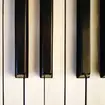Scientists to carry out spittle test on Salisbury Cathedral Choir to assess hymn safety
29 June 2020, 14:30 | Updated: 30 June 2020, 17:54

Scientists are testing the reach of spray and spittle from choirs to determine the safety of singing, amid pandemic.
Scientists will measure spray and spittle of Salisbury Cathedral singers to test the safety of singing as coronavirus lockdown measures start to ease.
With congregations returning to churches this Saturday 4 July, plans are underway to carry out lab tests on singers – and two Lay Vicars from Salisbury Cathedral Choir have volunteered to have the flight of their spray could be measured while they sing.
Scientists from Public Health England are keen to test whether or not it is safe for congregations to sing – or watch singers – as they start to return to services from this weekend.
If spittle is found to be sprayed across an unsafe distance, causing possible transmission of the virus, it may be deemed unsafe to sing and services could be hummed instead: “It depends on what we learn about the research now being done urgently into singing,” director of the Royal School of Church Music, Hugh Morris, told The Times. “Humming might be safer.”
Read more: Choir of 100 people sings without masks at Mike Pence event >

The Kyrie from Duruflé's Requiem
Current government guidance invites churches to reopen on Saturday 4 July – along with pubs, restaurants, galleries theatres and other public venues – but with safe social distancing measures in place to mitigate the risks posed by coronavirus.
“Places of worship play an important role in providing spiritual leadership for many individuals, and in bringing communities and generations together,” the government has written in its current COVID-19 guidance online. “However, their communal nature also makes them places that are particularly vulnerable to the spread of coronavirus.”
While churches will soon open, singing or bell ringing are not yet permitted, due to the risk posed by flying droplets of saliva from singing and, presumably, the repeated contact of instruments’ surface.
A spokesperson from Public Health England told The Times: “We are looking at droplet transmission and to what extent it involves transmission by mouth.”
Read more: Choir practice caused ‘superspread’ of 52 coronavirus cases >

Choirboy inhales helium, sings Allegri's 'Miserere'
In Munich, scientists Christian Kähler and Rainer Hain recently carried out similar tests to weigh up the safety of singing and music-making in a post-coronavirus world – finding that singers transferred droplets only up to a 0.5m distance, so it was unlikely for the virus to be passed on.
They concluded: “The low spread of air movement is not surprising, since singing does not expel a large volume of air in jerks like coughing or sneezing.”
Leaders in choral music, including Bob Chilcott and John Rutter, recently penned an open letter in The Guardian imploring the government to look carefully at restrictions on singing in the wake of COVID-19.
Read more: Choral leaders sound the alarm about the fate of choirs after COVID-19 >
“Singing in a choir is not only about communality, social cohesion and harmony; for many it is an essential source of emotional wellbeing and positive mental health,” they wrote. “It is a powerful expression of our culture and humanity, and it cannot be allowed to fade away.
“We need the government to show how we can restart singing together on an equal footing with opening theme parks, shopping and kicking a football around.”


































